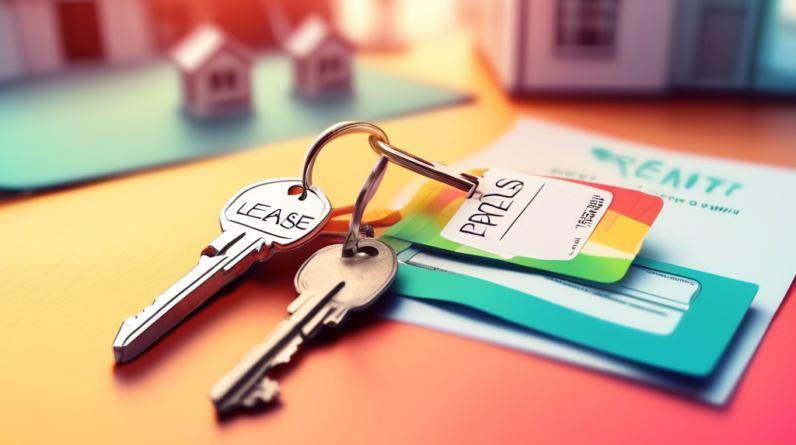
A rent-to-own agreement, also known as a lease-purchase agreement, can be a viable path to homeownership for individuals who aren’t quite ready or able to qualify for a traditional mortgage. This comprehensive guide delves into the intricacies of rent-to-own contract terms and conditions, empowering you to make informed decisions.
What is a Rent-to-Own Agreement?
A rent-to-own agreement is a legally binding contract between a tenant (potential buyer) and a landlord (seller) that outlines the terms of renting and potentially purchasing a property. Unlike a standard lease agreement, a rent-to-own agreement includes an option to buy the property at a predetermined price within a specific timeframe.
How Rent-to-Own Agreements Work
Rent-to-own agreements typically involve two key components:
1. Lease Agreement:
The initial phase functions much like a traditional rental agreement. You’ll agree to rent the property for a set period, typically 1 to 3 years, and pay monthly rent to the landlord. This portion of the agreement will detail:
- Monthly rent amount
- Duration of the lease term
- Security deposit requirements
- Responsibility for maintenance and repairs
2. Option to Purchase:
Simultaneously, you secure the right, but not the obligation, to purchase the property at a predetermined price within the agreed-upon lease period. This option fee grants you the exclusive right to buy the property. Key aspects of the option agreement include:
- Purchase price of the property
- Portion of rent payments potentially credited towards the purchase
- Timeframe for exercising the purchase option
Key Rent-to-Own Contract Terms and Conditions
Navigating the complexities of rent-to-own contracts requires a clear understanding of the essential terms and conditions:
1. Purchase Price:
The contract should explicitly state the agreed-upon purchase price for the property. This price is typically established at the outset and remains fixed, providing you with price predictability in a potentially fluctuating market.
2. Rent Credit:
A significant advantage of rent-to-own agreements lies in the potential for rent credits. The contract might stipulate that a portion of your monthly rent payments contributes towards the eventual purchase price. This feature allows you to build equity gradually while renting.
3. Option Fee:
In most cases, you’ll pay a non-refundable option fee upfront to secure the right to purchase the property. This fee, typically a percentage of the sale price, compensates the seller for taking the property off the market.
4. Maintenance and Repairs:
Rent-to-own agreements often blur the lines regarding responsibility for maintenance and repairs. It’s crucial to define who bears the responsibility for various maintenance tasks, from routine upkeep to major repairs. Clarifying this aspect can prevent future disputes and unexpected costs.
5. Purchase Option:
The agreement should clearly define the timeframe within which you have the option to purchase the property. It’s crucial to understand whether you have a fixed option to buy within a specific period or a more flexible right of first refusal, allowing you to match any offer the seller receives.
6. Termination Clause:
Life is full of surprises, and circumstances may change, prompting you to reconsider the purchase. The contract should outline the conditions under which you can terminate the agreement and any potential financial repercussions, such as forfeiting the option fee or accrued rent credits.
Benefits of Rent-to-Own Agreements
1. Path to Homeownership:
Rent-to-own agreements provide a pathway to homeownership for those facing barriers like limited credit history or the inability to secure a traditional mortgage. They allow you to build equity gradually while improving your financial standing.
2. Time to Prepare:
These agreements offer a buffer period to improve your credit score, save for a down payment, and adjust to the financial responsibilities of homeownership.
3. Lock in Purchase Price:
Locking in the purchase price at the beginning safeguards you from potential price increases in the real estate market during the option period.
4. Trial Run:
A rent-to-own agreement functions as a trial run, allowing you to experience living in the property and assessing its suitability before committing to a purchase.
Drawbacks of Rent-to-Own Agreements
1. Potential for Loss:
Should you decide against purchasing the property, you risk losing the option fee and any accrued rent credits, resulting in a financial setback.
2. Higher than Market Rent:
Be prepared to potentially pay a slightly higher monthly rent compared to traditional leases. This premium compensates the seller for the flexibility and risks associated with a rent-to-own agreement.
3. Maintenance Responsibilities:
Unlike traditional rentals where landlords often shoulder most maintenance responsibilities, rent-to-own agreements may shift some or all of those burdens onto you, potentially leading to unexpected repair costs.
4. Missed Opportunity:
While building equity in the property, you might miss out on potential investment opportunities or the flexibility to relocate if your circumstances change.
Tips for a Successful Rent-to-Own Experience
1. Thoroughly Review the Contract:
Never rush into a rent-to-own agreement without carefully reviewing and understanding every term and condition. Seek legal advice from a real estate attorney to clarify any ambiguities.
2. Research the Property:
Conduct due diligence on the property’s condition, just as you would with a traditional purchase. Consider a professional home inspection to uncover any hidden maintenance issues.
3. Assess Your Financial Readiness:
Evaluate your financial capacity to handle both the monthly rent payments and potential future mortgage payments. Factor in potential maintenance and repair costs.
4. Communicate Openly:
Maintain clear and consistent communication with the seller throughout the agreement period. Address any concerns or questions promptly to avoid misunderstandings.
Conclusion
Rent-to-own agreements can be a viable pathway to homeownership, but they demand careful consideration and a thorough understanding of the associated terms and conditions. By weighing the benefits and drawbacks, seeking expert guidance, and prioritizing open communication, you can navigate the intricacies of rent-to-own agreements and make informed decisions that align with your housing goals.







